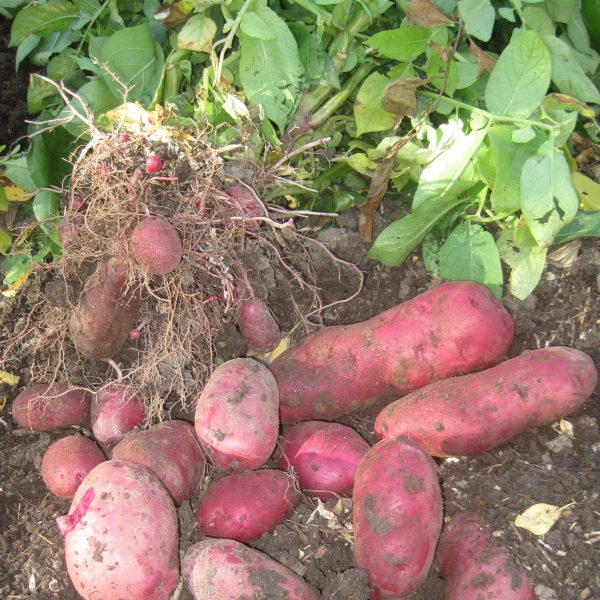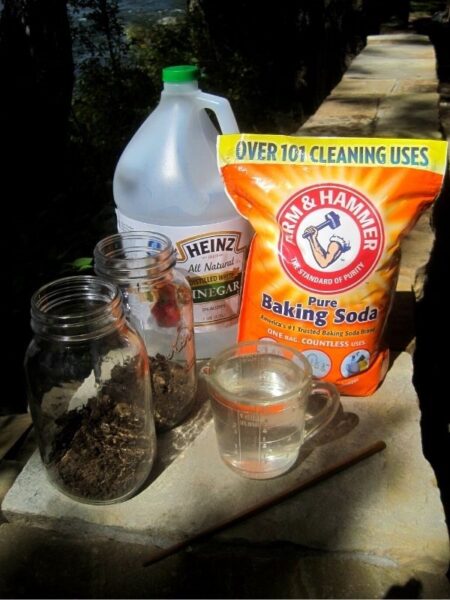How to Grow Cauliflower for the Best Crop Ever
CAULIFLOWER is a great plant for your garden. Find out how to grow cauliflower! It’s tasty on its own or as a side dish.
Plus, cauliflower is a great source of nutrients. Nutrients in Cauliflower
Growing Cauliflower Overview
- Soils
- Sunlight
- Temperature
- Planting instructions
- Cold Hardiness
- Days to Germinate
- Thinning
- Varieties
- Days to Maturity
- Harvesting
- Storage Tips
- Plus, a few fresh Cauliflower Recipes!
- Container Gardening
- Printable Growing Handout
Find Your Zone: FREE USDA Hardiness Zone Planting Guide
1. SOILS:
- Cauliflower grows best in well-drained soil with a pH of 6.0 to 7.5. You can raise the pH by adding wood ash or garden limestone)
- The soil should be moist but not soggy.
- You can grow cauliflower in garden beds, containers, or pots. Just ensure your containers have at least 20 inches of soil.
- Use Organic All-Purpose Fertilizer
- Or Liquid Fish Emulsion
Depending on your geographic location, soils vary tremendously and need different soil amendments.
It is easy to find out how to test your soil with this inexpensive soil tester from Amazon.
2. SUNLIGHT:
Cauliflower, like most vegetables, prefers full sun but can handle some shade. Six hours of sunlight each day is enough for healthy growth.
3. TEMPERATURE:
Cauliflower grows best in cool weather. It does not like heat, so plant it in spring about three weeks before the last frost.
For a fall harvest, plant in mid-August so the heads can mature in the cooler autumn weather. For fall planting, sow seeds about 60 days before the first hard frost in your area.
4. PLANTING:
CAULIFLOWER is a high feeder: Remember to Rotate Your Crops
Cauliflower grows best in cool weather. Here’s how to plant it:
- Start seeds indoors 4 to 5 weeks before the last frost.
- Transplant seedlings when they are 4 to 5 weeks old.
- Direct seed 3 to 4 weeks before the last frost.
- Buy seedlings from a nursery.
Tip: If you start seeds indoors, cover the transplants with plastic tunnels or cloches for protection.
Specifics on Starting Cauliflower Seeds Indoors:
- Start seeds 6 to 8 weeks before your last frost.
- Don’t start too early; otherwise, the seedlings will become weak and tall.
- Use a seed-starting mix or potting soil.
- Fill your cups or small pots with the starting mix.
- Plant 2 seeds in each cell and cover them with 1/4″ to 1/2″ of soil, then press down gently.
- Cauliflower seedlings need plenty of direct light.
- Follow the grow light instructions or place them in a sunny south-facing window.
- Keep the starting mix damp but not soaked.
- Transplant when the seedlings are about 6 inches tall.
- Cover them with plastic cloches, milk jugs with tops removed, tunnels, or cold frames.
- As the heads grow, tie the large outer leaves around them to shield them from direct sunlight.
Special Note:
Tie leaves around non-self-blanching cauliflower heads to keep them creamy white. Sunlight can turn the heads purple, just like how potatoes can turn green and purple when exposed to light.
Keep an eye on self-blanching varieties to ensure the inner leaves are covering the developing heads.
Specifics on Direct Seeding Cauliflower:
- Cauliflower is a high feeder and needs well-drained, fertile soil.
- Add compost and organic matter to your garden soil.
- Consider an all-purpose fertilizer or fish emulsion.
- Plant 3 to 4 seeds about 18″ apart and plan on thinning to the hardiest seedling.
- Cover with 1/2″ dirt and tap firmly.
- Seeds should be planted about 18″ apart in rows.
- Rows should be 36″ apart.
- Soil needs to be kept moist throughout the growing season.
- Hand weed or mulch to suppress weeds.
- As heads develop, make sure to tie up the large outer leaves around heads to protect from direct sun.
Special Note:
Tying up leaves around non-self blanching cauliflower heads ensures creamy white heads.
Watch self blanching varieties to make sure the inner leaves are protecting the developing heads.
Find Out How to Stop Cut Worms!
Cut Worms can destroy your cauliflower seedlings overnight. Learn How to Protect them Now!
5. COLD HARDINESS:
Cauliflower can withstand cool weather. It does best under 75 degrees. So, set out transplants at the last frost. Cover with cloches or tunnels.
Direct seed 3 to 4 weeks before the last frost. It will take cauliflower seeds a little longer to germinate in cold, damp weather.
6. DAYS TO GERMINATE: approximately 8 days
Cauliflower seeds typically germinate in approximately 8 days.
7. THINNING:
Cauliflower seedlings should be set out approximately 18 inches apart. If direct-seeded, thin your cauliflower plants to 18 inches apart. When cauliflower plants are too close together, small button-type heads may grow instead of full, normal-sized heads.
8. VARIETIES: from High Mowing Seeds
High Mowing Organic Cauliflower Seed Varieties
If you would like to pick your variety, take a look here: Cauliflower Varieties
9. DAYS to MATURITY: 62 and 80 days
Dates vary but you can pick mature cauliflower heads in approximately 50 to 65 days.
10. HOW to HARVEST:
- Begin cutting your cauliflower as soon as the heads appear with tight buds and are fully developed.
- If cabbage looper caterpillars are a problem, simply soak in saltwater for 15 minutes and then rinse.
11. STORAGE IDEAS:
- Wash and store cauliflower for fresh eating.
- If cabbage looper caterpillars are a problem, soak for 15 minutes in saltwater and then rinse.
- Store in the crisper drawer.
- Rinse, blanch, and freeze.
Great Resource: Ball Canning and Freezing Resource Book
12. RECIPE IDEAS for Cauliflower
Lightly Steam and sprinkle with Parmesan Cheese and Lemon Pepper
Do Not Forget to:
- Simple Eating Fresh!
- Cauliflower florets make beautiful garnishes and work very well on vegetable trays!
13. CONTAINER GARDENING:
You can grow cauliflower in pots or containers. Since they are large plants, use a pot that holds at least 20 inches of soil.
Keep the soil moist during the growing season. If you’re growing them in a greenhouse, be careful with hot temperatures. Use sun or shade cloth and ensure proper ventilation.
Harvest the cauliflower when the heads are full and heavy, and the small buds are still tightly closed.
14. PRINTABLE GROWING GUIDE:
HOW to GROW CAULIFLOWER | How to Grow Series

Learn How to Grow Cauliflower
Materials
- Cauliflower Seeds or Seedlings
- Starting Mixture
- Planting Cells or Small Pots
- Or, if Direct Seeding-fertile Garden Soil
Tools
- Shovel
- Hoe
- Trowel
- Gloves
- Watering Can
Instructions
Quick Planting Review:
♦Plant indoors 5 weeks before last frost
♦Direct Seed 3 to 4 weeks before last frost
Specifics on Starting Cauliflower Seeds Indoors:
- Start seeds approximately 5 weeks before your last scheduled frost
- Do not start too early as the cauliflower seedlings will get too leggy and spindly
- Use a starting mixture or potting soil
- Fill your individual cups, 6 pack cells, or other little pots with starting mixture
- Plant 2 seeds per cells and cover with 1/4" to 1/2" dirt and tap firm
- Cauliflower seedlings need a good source of direct light
- Follow instructions from the grow light manufacturer or have a good south facing window
- Water to keep starting mixture damp but not soggy
- Transplant at approximately 5 to 6 weeks of age
- Transplant when about 6" tall
- Cover with plastic cloches, plastic milk jugs with tops off, plastic tunnels or cold frames
- As heads develop, make sure to tie up leaves around heads to protect from direct sun
Special Note:
Tying up leaves around non-self blanching cauliflower heads insures creamy white heads.
Watch self blanching varieties to make sure the inner leaves are protecting the developing heads.
Specifics on Direct Seeding Cauliflower:
- Cauliflower is a high feeder and needs well drained, fertile soil
- Add compost and organic matter to your garden soil
- Consider an All Purpose Fertile or Fish Emulsion
- Plant 3 to 4 seeds every 18 inches
- Cover with 1/2" inch dirt and tap firm
- Rows should be 36" apart
- Soil needs to be kept moist throughout the growing season
- Hand Weed or Mulch to suppress weeds
- As heads develop, make sure to tie up leaves around heads to protect from direct sun
Special Note:
Tying up leaves around non-self blanching cauliflower heads insures creamy white heads.
Watch self blanching varieties to make sure the inner leaves are protecting the developing heads.
DAYS to GERMINATE: approximately 7 to 9 days
THINNING:
Cauliflower seedlings should be set out approximately 18 inches apart. If direct seeded, thin your cauliflower plants to 18 inches apart. When cauliflower plants are to close together, small button type heads may grow instead of full normal size heads.
DAYS to MATURITY: 50 to 72 days
HOW to HARVEST:
- Begin cutting your cauliflower as soon as full heads appear with tight buds and are fully developed
- If cabbage looper caterpillars are a problem, simply soak in salt water for 15 minutes and then rinse
STORAGE IDEAS: for Cauliflower
- Wash and Store Cauliflower for fresh eating
- If cabbage looper caterpillars are a problem, soak for 15 minutes in salt water and then rinse
- Store in crisper drawer
- Rinse, Blanch and Freeze
Notes
- CAULIFLOWER is a High Feeder: Remember to Rotate Your Crops
- IF CABBAGE LOOPER CATERPILLARS are a problem: simply soak in salt water for 15 minutes and then rinse
NOTE: Cut Worms can destroy your broccoli seedlings overnight. Protect them now!
FINAL THOUGHTS:
Growing cauliflower can be a fulfilling experience, especially for those who love fresh veggies from their garden.
Just remember to watch out for pests like aphids, or cut worms and cabbage worms. With some patience and care, you’ll enjoy a great harvest of tasty cauliflower. Happy gardening!
Extra Info: COMPANION PLANTING for Cauliflower:
Cauliflower loves to be planted by Beets, Celery, Lettuces, Onions, Spinach & Potatoes but NOT by Peppers, Tomatoes or Strawberry!








